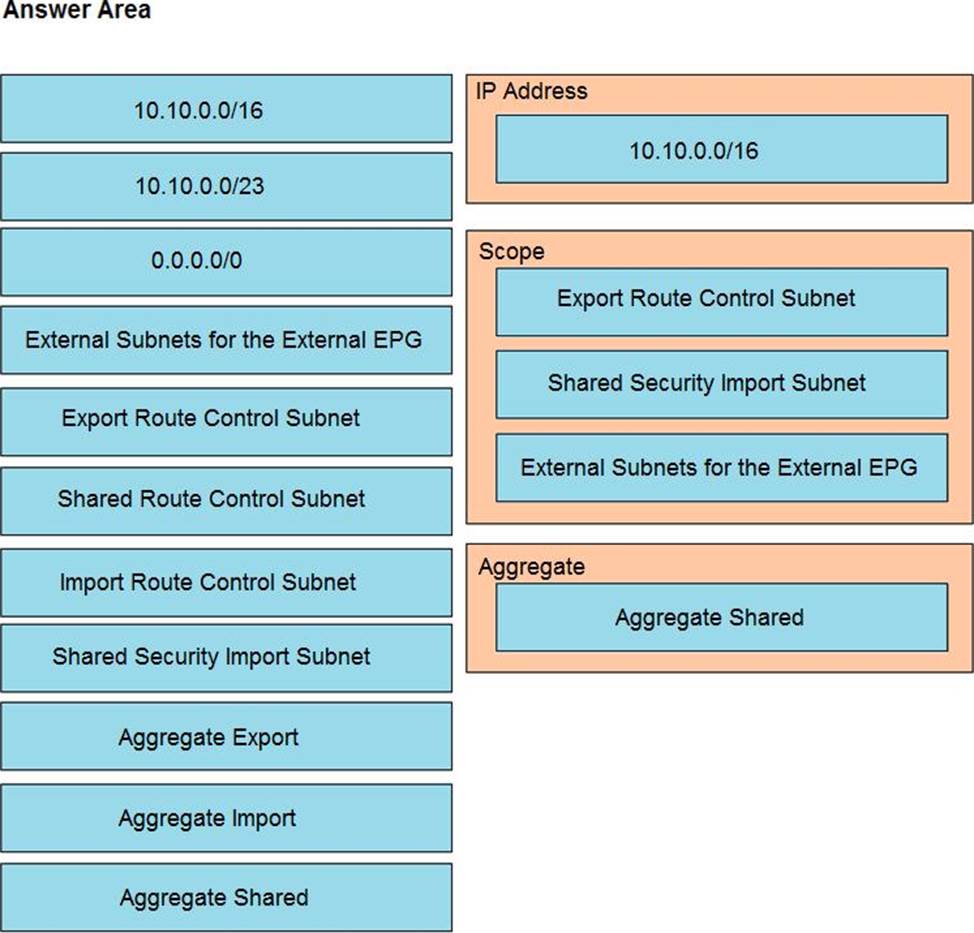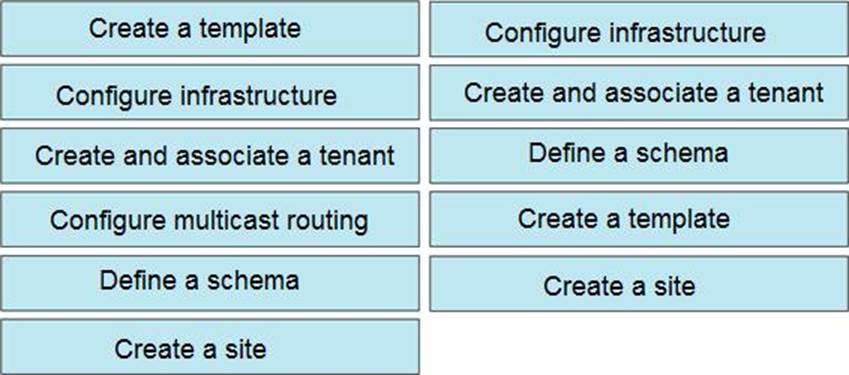Cisco 300-630 Implementing Cisco Application Centric Infrastructure – Advanced (DCACIA) Online Training
Cisco 300-630 Online Training
The questions for 300-630 were last updated at Dec 09,2025.
- Exam Code: 300-630
- Exam Name: Implementing Cisco Application Centric Infrastructure - Advanced (DCACIA)
- Certification Provider: Cisco
- Latest update: Dec 09,2025
A cloud provider must make a pair of firewalls available to all tenants. Each tenant defines its own service graph.
Where should the Layer 4 to Layer 7 service be configured to accomplish this goal?
- A . management tenant
- B . infrastructure tenant
- C . user tenant
- D . common tenant
Refer to the exhibit.
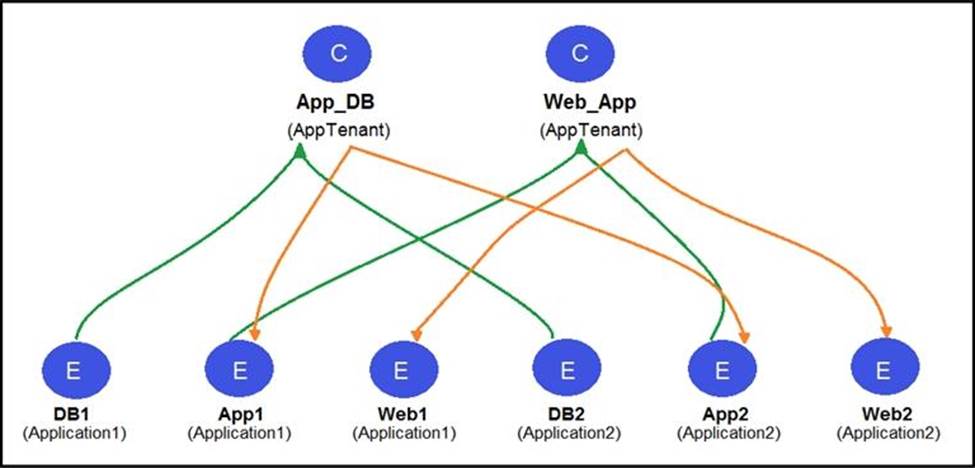
Two application profiles are configured in the same tenant and different VRFs .
Which contract scope is configured to allow communication between the two application profiles?
- A . global
- B . VRF
- C . application
- D . tenant
What are two characteristics of Cisco ACI and Spanning Tree Protocol interaction? (Choose two.)
- A . When a TCN BPDU is received in a VLAN, Cisco ACI flushes the endpoints for the associated encapsulation.
- B . STP BPDUs are dropped due to MCP.
- C . MST BPDUs are flooded correctly in Cisco ACI fabric without additional configuration.
- D . BPDU filter and BPDU guard can be configured on Cisco ACI leaf edge ports.
- E . Cisco ACI must be configured as the STP root for all VLANs.
Refer to the exhibit.
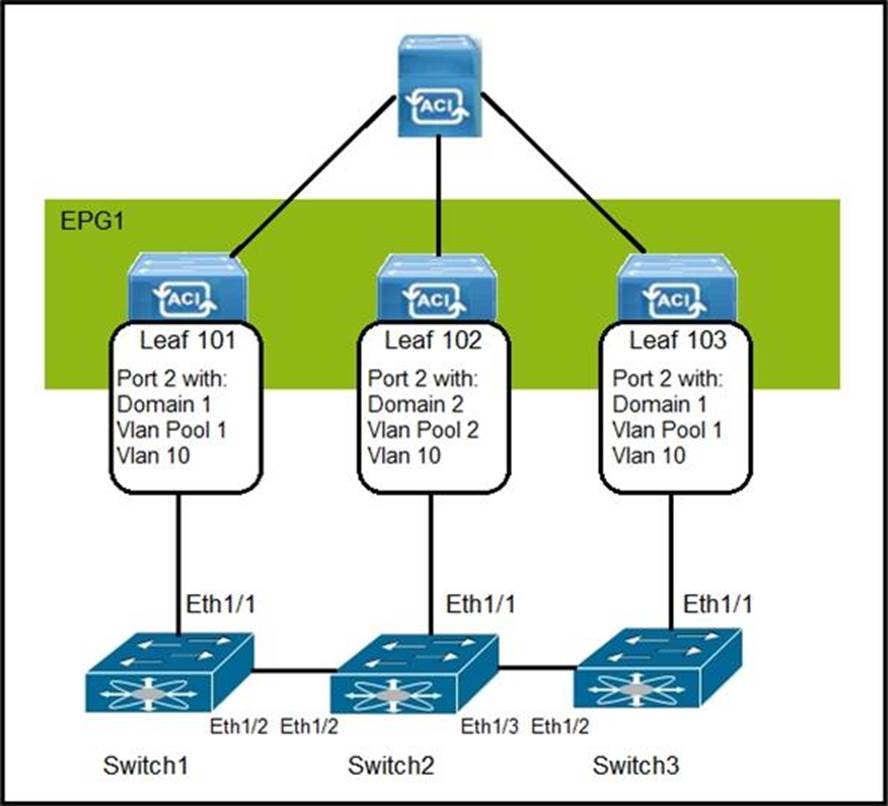
How are the STP BPDUs forwarded over Cisco ACI fabric?
- A . STP BPDUs that are generated by Switch2 are received by Switch1 and Switch3.
- B . Cisco ACI fabric drops all STP BPDUs that are generated by the external switches.
- C . Cisco ACI acts as the STP root for all three external switches.
- D . STP BPDUs that are generated by Switch1 are received only by Switch3.
An engineer creates the objects that must be deployed at each site in Cisco ACI Multi-Site Orchestrator .
Which action should be taken before the schema can be associated with the newly configured site?
- A . Attach the templates to the newly configured site
- B . Configure a provider for the Cisco ACI Multi-Site Orchestrator
- C . Import existing policies from an existing tenant to Cisco ACI Multi-Site Orchestrator
- D . Configure the Infra Site-Specific Settings
Which two components must be configured as stretched to establish intra-VRF communication between two EPGs that are deployed in different sites and different bridge domains? (Choose two.)
- A . contract
- B . tenant
- C . application profile
- D . bridge domain
- E . EPG
In a Cisco ACI Multi-Site fabric, the Inter-Site BUM Traffic Allow option is enabled in a specific stretched bridge domain .
What is used to forward BUM traffic to all endpoints in the same broadcast domain?
- A . ingress replication on the spines in the source site
- B . egress replication on the source leaf switches
- C . egress replication on the destination leaf switches
- D . ingress replication on the spines in the destination site
DRAG DROP
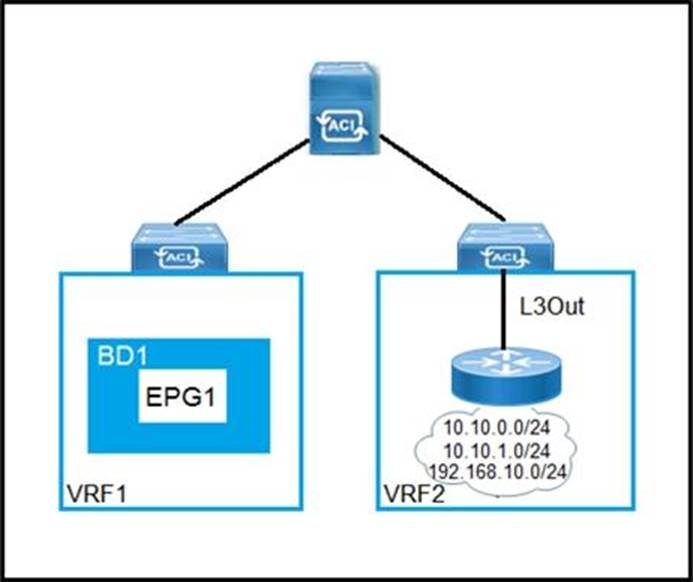
Refer to the exhibit. Drag and drop the subnets and flags from the left into the External Network Instance Profile policies on the right to create a setup that advertises only 10.10.0.0/24 and 10.10.1.0/24 prefixes in VRF1 and establishes connectivity between VRFs. Not all options are used.
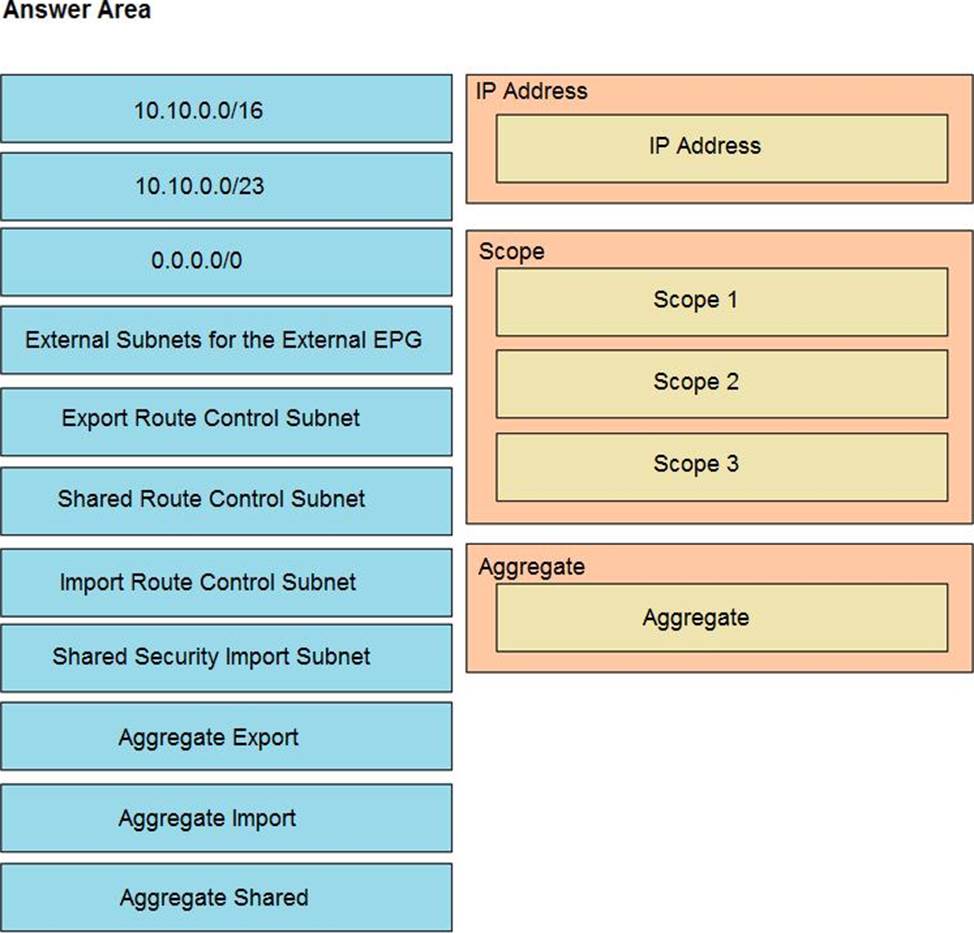
DRAG DROP
An engineer deploys a Cisco ACI Multi-Site Orchestrator for the first time.
Drag and drop the actions from the left into the steps on the right to add a site and deploy new Cisco ACI objects to the fabric. Not all actions are used.
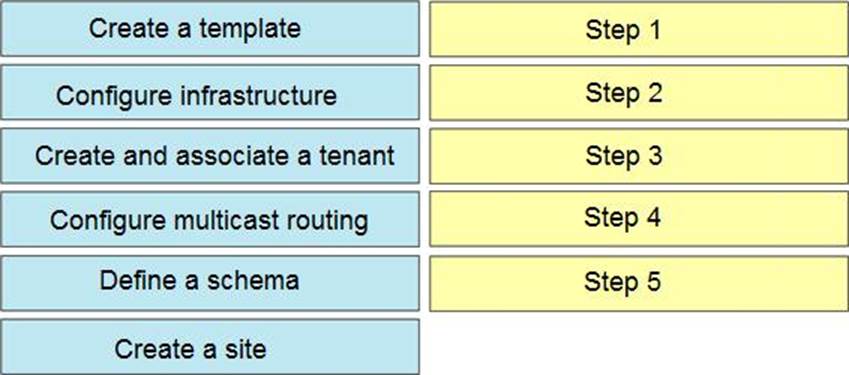
An engineer configures a Cisco ACI Multi-Pod for disaster recovery .
Which action should be taken for the new nodes to be discoverable by the existing Cisco APICs?
- A . Enable subinterfaces with dot1q tagging on all links between the IPN routers.
- B . Configure IGMPv3 on the interfaces of IPN routers that face the Cisco ACI spine.
- C . Enable DHCP relay on all links that are connected to Cisco ACI spines on IPN devices.
- D . Configure BGP as the underlay protocol in IPN.
Latest 300-630 Dumps Valid Version with 76 Q&As
Latest And Valid Q&A | Instant Download | Once Fail, Full Refund

